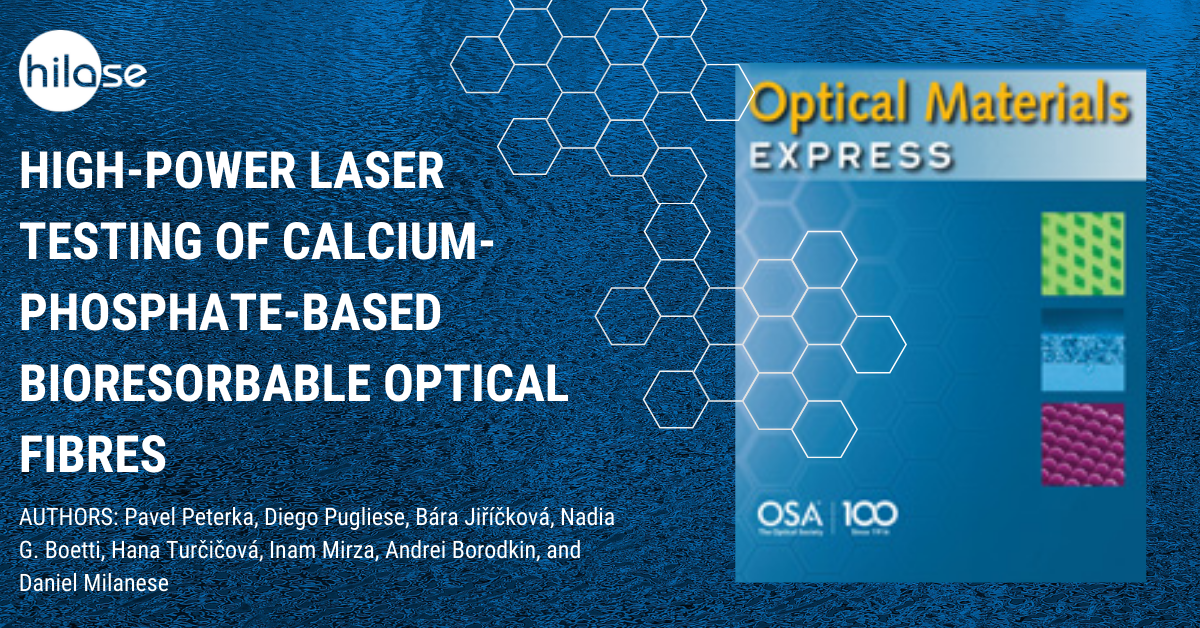Our colleagues Dr. Hana Turcicova and Dr. Inam Mirza are bringing interesting observations for the use of a new type of optical fibers in biomedicine. The greatest advantage of such fibres is that they would be biodegradable and biocompatible and as such they would not have to be removed from the patient’s body. Hana and Inam are co-authors of the article on High-power laser testing of calcium-phosphate-based bioresorbable optical fibers that has been published in the Optical Materials Express by OSA Publishing.

Silica optical fibers are employed in endoscopy and related minimally invasive medical methods thanks to their good transparency and flexibility. Although silicon oxide is a biocompatible material, its use involves a serious health risk due to its fragility and the fact that potential fiber fragments can freely move inside the body without the possibility of being detected by conventional methods such as X-ray imaging. A possible solution to this issue can be the development of optical fibers based on bioresorbable (i.e., biodegradable and biocompatible) materials, which exhibit the important benefit of not having to be explanted after their functionality has expired. The optical power transmission tests of recently developed single-mode (SM) and multi-mode (MM) bioresorbable optical fibers based on calcium-phosphate glasses (CPGs) are here reported. A continuous-wave (CW) fiber laser at 1080 nm with output power up to 13 W and picosecond laser sources at 515 and 1030 nm with MW pulse peak power were used to test the transmission capabilities of the CPG fibers. No degradation of the CPG fibers transmission under long-term illumination by CW laser was observed. A laser-induced damage threshold (LIDT) at a fluence higher than 0.17 J/cm2 was assessed with the picosecond laser sources.
Here you can read the whole article.








